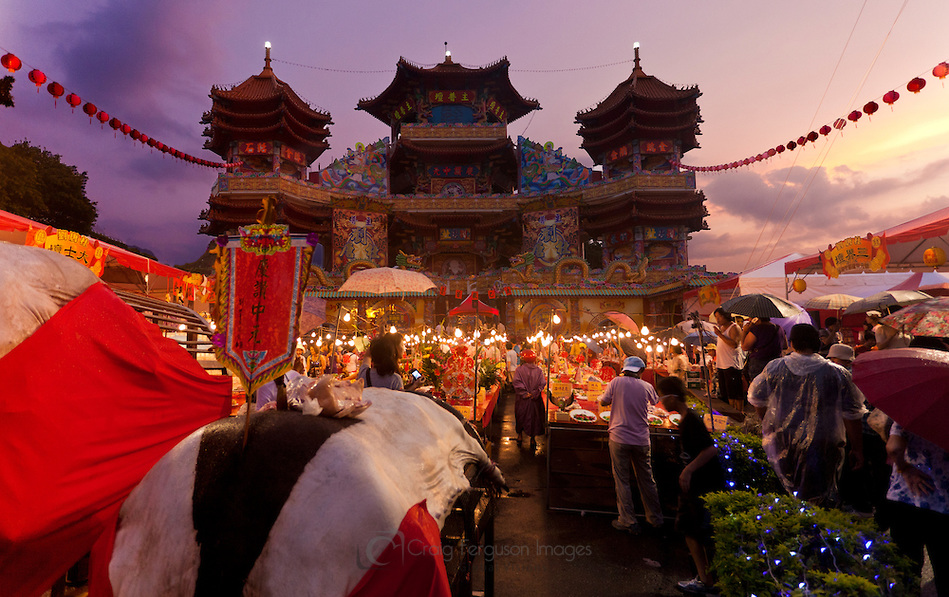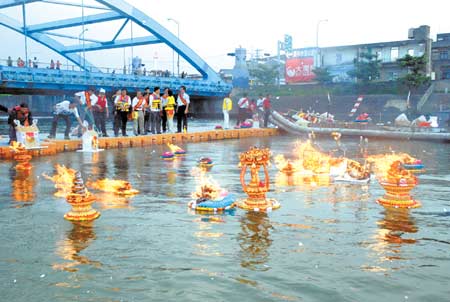The Ghost Festival is a traditional Buddhist and Taoist festival held in many Asian countries. Taiwan is celebrating the Ghost Festival on Friday, August 28th, though in some countries the date is different. Traditionally, locals believed that ghosts haunt the island of Taiwan for the entire seventh lunar month, when the mid-summer Ghost Festival is held. The month is known as the Ghost Month. The first day of the month is marked by opening the gate of a temple, symbolizing the gates of hell. On the twelfth day, lamps on the main altar are lit. A procession of lanterns is held on the thirteenth day, followed by a parade releasing water lanterns on the fourteenth day. Incense and food are offered to the spirits to encourage them not to visit homes and spirit paper money is also burned as an offering. These ghosts are believed to be ancestors of those who forgot to pay tribute to them after they died or those who were never given a proper ritual send-off.
As the ghosts and suffering spirits come out to visit, the Taiwanese believe these activities should be avoided:
- Staying out late at night.
- Swimming
- Moving, starting a new business, or getting married (the month is considered to be inauspicious).
- Hanging clothes outside at night.
- Picking up money off of the street.
- Stepping on, kicking, or otherwise harming the offerings.
- Wearing red- because ghosts are attracted to red.
According to Buddhists from China, the origin of Ghost Month stems from the canonical scriptures of Buddhism, but many of the visible aspects of the ceremonies originate from Chinese folk traditions. This process of syncretism is not limited to China: the ghost festival has parallels in Theravada Buddhism, such has the Cambodian Pchum Ben Festival, reflecting the same assumptions about an annual opening of the gates of hell.
Many countries celebrate the festival differently. In Singapore and Malaysia, for example, a concert-like festival is performed. However it is celebrated, the Ghost Festival marks a new season, the fall harvest, the peak of Buddhist monastic asceticism, the rebirth of ancestors, and the assembly of the local community.




